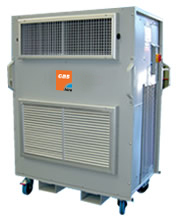Need to Cool Down Quickly? Explore Our Air Conditioner Rentals
CAS Hire is a leading UK supplier of portable air conditioners for hire. We have everything you need to stay cool and comfortable. We offer a massive selection of units, from industrial powerhouses to quiet and efficient personal coolers, all available for short-term or long-term hire.
Here's what sets CAS Hire apart:
- Nationwide coverage: We deliver the next working day, wherever you are in the UK.
- Unbeatable selection: Choose from industrial air conditioners, portable split units, evaporative coolers, and ducted options.
- Flexible rental options: Keep cool for a week, a month, or the entire season - the choice is yours!
- Skilled staff on hand to guide and assist with your equipment selection





